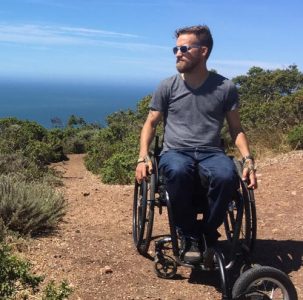The guidelines have two levels: a starting level and an advanced level. Which level you choose depends on your goals, abilities and current fitness level. If you’re just starting a physical activity program, consider working up to the starting level and ideally work up to the advanced level. If you’re already physically active, you might want to begin with the advanced level.

The guidelines are intended for adults with SCI (all levels of injury up to C3) who are 18 to 64 years old, and have been injured more than one year. The guidelines may also be used for people 65 and older, and by people who have been injured for less than one year, but we advise these individuals to consult with an appropriate healthcare provider before starting a physical activity program.
![]()
I don’t do any physical activity at all. How should I start?
Start with short, mild-intensity workouts. When it feels comfortable, gradually increase the duration, frequency and intensity of your physical activity sessions until you believe you’re meeting the starting level of the guidelines. Remember to consult a healthcare provider before starting a physical activity program, and keep safety top of mind.
- The starting level of the guidelines is the minimum level of activity needed to achieve fitness benefits.
- The advanced level of guidelines will give you additional fitness and health benefits, such as a lower risk of developing Type 2 diabetes and heart disease.
Aerobic activities are any type of physical activities that are done continuously and that increase your heart rate and breathing rate, such as wheeling, swimming, hand cycling or dancing.
View more examples of aerobic activities
- Moderate intensity activities include activities that feel somewhat difficult, although you believe you could continue them for a long time. You're able to talk during these activities, but not sing your favourite song.
- Vigorous intensity activities include activities that make you feel like you're working really hard, and you can only continue them for a short time before getting tired. During these activities, you can't say more than a few words without pausing for a breath.
Strength-training includes any type of activity intended to increase muscle strength, such as exercises using cable pulleys, resistance bands, or weight-lifting. The guidelines state that adults with SCI should engage in 3 sets of 10 repetitions of strength-training activity for each major functioning muscle group 2 times per week. You should feel quite challenged (without hurting yourself) by the end of the 3 sets.
Learn more about strength-training activities
Absolutely. But you can also do aerobic activities and strength-training activities on different days. Do what works the best for you.
Weekly action plans created by SCI peers that use both approaches
View examples
- Start slow and gradually increase the amount of physical activity.
- Make a detailed physical activity plan that is realistic and achievable. Examples of how you can make a plan to become more active can be found here.
- In addition to your scheduled physical activity program, become more active with your friends, families or peers.
- Try different activities…and make it fun!
This website provides general information about physical activity options for people with SCI, as well as links to other related resources. Provincial SCI organizations are often an excellent source for specific information about physical activity options and assistance in your neighbourhood. Click here for contact information for the SCI organization in your province.
Learn more about the evidence behind the physical activity guidelines
Explore the evidence
![]()
Being active isn’t always about playing sports or going to the gym to get fit. It’s about being healthy enough to get out and experience the things in life that make you happy. Even small amounts of activity can allow you to engage with friends, experience new adventures, and help you feel better about yourself.”
— Robert Shaw
